WIN a copy of Kara-Leah’s new book ‘Sex, Drugs & (mostly) Yoga – Field Notes from Kundalini Awakening’, publishing in November 2018. Guaranteed to take you on an intimate journey into the depths of the Kundalini experience. Click here to sign up for the book launch list and go into the draw to win one of THREE print copies.
by Kara-Leah Grant
I once knew a yoga teacher who would joke how awakening would never happen to her – she wasn’t far enough along the path, or didn’t know enough, or wasn’t enough.
She had this idea that awakening only happened to spiritually advanced people, or special people.
Yet by all accounts, awakening can happen to anyone, anywhere, at anytime.
Why? Because awakening is nothing special. It is merely the shift from total identification with the mind – I am my thoughts – to an experience of Awareness or the field of being in which those thoughts arise – I am thinking those thoughts (and they’re likely not true). Eventually, the I that is thinking those thoughts also disappears, leaving only perception, or consciousness, behind.
So awakening is a shift of consciousness, often accompanied by energy experiences. Yogis refer to awakening as Kundalini Awakening, and it can be accompanied by all kinds of physical, emotional, mental and energetic phenomena – not all of which are pleasant.
Awakening, in varying degrees, is happening to people right now, all over the globe.
It happened to Karen Le Cussan a month or so ago in Queenstown, New Zealand. It happened to Guy Johnson on the first meditation retreat he attended. And it happened to me, nine years ago.
In August and September of 2004 I had two psychotic experiences and was committed to the Acute Psych Ward of Lion’s Gate Hospital. I was diagnosed bi-polar and prescribed an anti-psychotic and mood stablizer.
Yet, despite the psyche-shattering experience of psychosis, I knew deep down that the experience I’d had was some kind of awakening – albeit completely twisted by my entrenched ego.
During my two periods of psychosis, each of which lasted for approximately five days before sedation brought me down, I’d experienced a number of phenomena I was familiar with from my reading of yogic texts – such as Oneness and Bliss. I knew myself as part of All That Is and I perceived the true nature of reality – Oneness – underlying the illusion of separateness. ‘I’ disappeared.
Yet there was another darker aspect to this experience. Suddenly, all of the shadow aspects of my psyche, everything I’d been avoiding and denying for the last eight years of traveling and parting around the globe, crowded into my awareness and consciousness.
It was too much energy, too much insight and too much connection. I couldn’t cope and my mind blew out.
Cue men in white coats, medication and waking up in a psych ward.
Naturally obedient to authority, I fast took stock of the status quo and realised my best chance of getting out of the psych ward was to keep quiet about all the spiritual experiences I’d had and accept the diagnosis and medication I was offered.
A psych ward was not the place to be sharing mystical revelations about an awakening experience. Then they’d really think I was crazy.
My plan worked, and I was released after nine long days.
A week later, I’d packed up my life in Canada and flew back to my mother’s house in Glenorchy, New Zealand to try and figure out what had happened to me.
Was I crazy? Or was it something else?
My first port of call was local yoga teachers. My intuition told me that what I’d experienced had something to do with yoga. In the years leading up to my psychosis, I’d been practicing more and more yoga at local studios, plus regularly meditating by myself at home. My meditation was usually accompanied by some kind of consciousness-expanding drug – yes, I loved to trip out while focusing inward. Marijuana was most often my meditation drug of choice, but I also used mushrooms and once or twice acid.
That combination of drugs, meditation and yoga practice was a recipe for disaster.
It induced an shift in my consciousness before I’d done the hard work on my psyche, facing my shadows and demons at a moderate pace.
I didn’t know all of this then though. I also didn’t find it out from my local yoga teachers. They knew far less than I did.
It was the internet that proved to be my saviour. There I found stories about kundalini awakening and references to works by men like Krishna Gopi, author of Living with Kundalini, and Dr. Lee Sannella, author of The Kundalini Experience: Psychosis of Transcendence. I read everything I could get my hands on. I was desperate to prove that I wasn’t crazy – that something else had happened to me.
Two or so years after my psychosis I finally met a real yoga teacher – Swami Shantimurti of Ashram Yoga from Auckland.
He was in Queenstown delivering a workshop on the chakras. During this workshop he spoke about the dangers of using drugs and practicing yoga. He spoke about kundalini awakening. And he talked about how awakening kundalini without the right support and guidance from an experienced teacher could send people into psychosis.
Afterwards, I joined the throng of students around Sw. Shantimurti and choked up as I asked him in front of this audience if my experience sounded like some kind of awakening. His confirmation acknowledged what I’d always intuitively known – I wasn’t crazy and my experience was a known quantity. Sw. Shantimurti also gave me some practices to stabilize my system.
Since that time, I’ve written and shared of my experiences openly on The Yoga Lunchbox and Elephant Journal. Many people have contacted me to share their own experiences and ask questions. Most are so relieved to learn that what they’re experiencing is a normal part of the human condition. Awakening is not common, but it is normal.
Or, as Swami Shanitmurti says, awakening is humanity’s evolutionary destiny.
“It’s our evolutionary destiny to have these experiences,” says Sw. Shantimurti. “The only way to inhibit them happening is by hedonistic behaviour like eating meat, drinking lots of alcohol, taking lots of substances and living an unaware life. Then the energy doesn’t get intense enough to create an awakening on any kind of level.
Anyone at any time can have an energy shift and it could be on a physical, emotional, mental, or spiritual level. Depending on what level it is will determine the intensity of the experience, how difficult the experience is and how difficult it is to sustain a balanced mind.”
Swami Muktidharma of Anahata Yoga Retreat in Takaka, New Zealand, who, like Swami Shantmurti, studied and learned from Swami Satyananda, agrees.
“These things can happen when there is no genuine guidance. Many people have come across the experience of making mistakes due to the lack of proper guidance,” he says. “This becomes painful because some of them can end in mental hospitals and even end up in a comatose state. There are mental purification practices in yoga that first need to be understood because they bring up deep rooted impressions or samskaras.”
These awakening experiences are often referred to as Kundalini Awakening, but both Swamis point out that a full Kundalini Awakening is a specific experience that means all of the knots and issues of the psyche have been resolved.
Traditionally, an aspirant would spend years, or lifetimes, methodically working through the knots and issues of the psyche through the cleansing practices of yoga before finally having a Kundalini Awakening. Now however, there are all kinds of people having various types of awakenings and these awakenings are often lumped under the phrase ‘Kundalini Awakening’.
“There is a big misuse of the term “kundalini awakening”. Most people who claim to have Kundalini awakened are confused,” says Sw. Muktidharma. “They do not understand that when you do some yoga practices energy is bound to move through the body. This is the stimulation of prana moving through the body.
However this is far away from being a spiritual experience. When people have these kinds of physical experiences they confuse it with awakening the kundalini.”
Swami Muktidharma’s view is not entirely shared by Sw. Shantimurti though, proving that even among long-time yogis, there can be disagreement over exactly what these awakening experiences are and how they’re happening.
“A lot of energy experiences aren’t Kundalini Awakening but all energy is Kundalini-based whether it is physical, emotional, mental or spiritual,” says Sw. Shantimurti. “People are having an energy shift and they can awaken level of perceptions that activate the chakras for awhile. They can move into some strange modes of behaviour.
The real full-on Kundalini Awakening experience is a surge of energy coming from mulhadara up the back of the spine, over the top of the head and culminating in the forehead. The whole system has awakened. This can be very strong if people aren’t prepared for it they can become quite schizophrenic or paranoid or have serious so-called mental sicknesses. However, the whole experience can be dealt with successfully through yoga and through associating with someone who’s aware of what is going on.”
The problem is, many of us who have these energy shifts have no idea what’s going on at the time, and sometimes even the yoga or meditation teachers we’re studying with don’t know either.
In September 2011, Auckland-based Art Director Guy Johnson headed off to a 10 day Vipassana Retreat near Auckland, New Zealand.
“I’d never meditated before or had any knowledge of what meditation really was. I thought I would learn a technique to help relax and deal with the stresses of life.”
What happened on that Vipassana Retreat was to change Guy and his life forever.
It began on Day 2 with a dream of choking a man to death and waking up choking on his own tongue. “Several hours later the penny dropped and I realised I was killing a part of myself. For the rest of the day I was in a surreal state.”
By Day 3 and 4, Guy was experiencing flickering visions and lights of all kinds, and his body had started moving through spontaneous mudras. “My tongue felt electrified and rigid. It had curved back to the roof of my mouth. I couldn’t stop it from doing this in meditation. It seemed to be directing a current of energy between my head and my body.”
Guy didn’t know it, but he was experiencing a spontaneous Khechari Mudra, or tongue lock mudra. It was minor compared with what was to follow.
“Towards the end of this hour-long sit my entire body was awash with sub atomic particles – I felt fluid and unreal. Then a quiet buzzing sound rapidly grew louder and louder and I felt a rumble deep within me. This was accompanied by a very intense pleasurable sensation – almost erotic.
I felt like I was being hit by a freight train and an explosion of the most pure white electricity/energy I’d ever seen. It was inside me, rapidly moving up and down my being. I realised I was nothing but energy – pure white energy. It was extremely intense and felt like a volcanic eruption inside myself. It was also scary. I opened my eyes. Everything looked very surreal.
We all went outside for a break. I was staggering almost unable to walk straight. I found some earth and kneeled there with my hands on the ground, not really sure what the hell had just happened. I had the same experience again on the evening on the next sit in an almost identical way.”
Guy had no knowledge of yoga. He’d never heard of Kundalini. His knowledge of meditation was limited to the retreat. It was time to speak to the Vipassana teacher.
“I don’t think he really understood what was going on. He just said ‘What Vipassana unlocks is very powerful’,” says Guy. “Following this dramatic fourth day the rest of the 10 day course was bathed in a mystical air. I couldn’t sleep at all. Every time I meditated something new and weird would happen – visions or spontaneous hand mudras similar to the one you seen Christian saints making.
I’d become electrified after every ‘sit’. By the evenings I’d be so wired I began hunting the retreat premises looking for a tree big enough for me to hug in a desperate attempt to try and earth myself. I feared for my sanity. I thought I was dissolving and had the eerie sense my body was disappearing. I felt hyper sensitive almost in a super natural state. I felt like I was being healed in a vey brutal way. Old emotions and memories came burning back into my present mind. I took all this to mean Vipassana was working and clearing out the toxic karmas in the mind.”
Guy left the course feeling like he was bathed in light. “I felt extremely happy, lighthearted and sensitive. For six months after I remained in this sate,” he says. “But more importantly what it had created in me was the beginning of a spiritual quest to want to know myself deeply and to understand the nature of my existence – a quest that I can’t seem to ignore or stop or want to. It feels this quest is the most important aspect of my life now. It’s a massive shift with big questions being asked and repercussions that are imperceptible to most people, but inside me it feels like a storm is raging.”
It was hardly the relaxing experience Guy thought he’d get out of Vipassana – a style of meditation which uses a technique described as an “observation-based, self-exploratory journey to the common root of mind and body that dissolves mental impurity.”
Stephan Cope, author of Yoga and the Quest for the True Self characterises Vipassana as the cultivation of clear seeing. In his book, which shares his own kundalini experiences and that of other students and friends, Stephan emphasizes the necessity for the technique of clear seeing – i.e. Vipassana – to be equally balanced with equanimity.
Develop too much clear sight or wisdom into yourself without the requisite foundation and support of equanimity or calm abiding and all kinds of strange things can happen. In his book, Cope shares an experience he had at a month long Vipasana retreat. Like Guy, he too felt like he was “disappearing” – he’d lost a solid sense of Self, or Being-ness.
Panicking, Cope made a late night visit to one of the Vipassana teachers who calmly told him.
“You’re not going crazy. You’ve refined your awareness to a very high degree… Your awareness has grown faster than your equanimity. You need to go back to a practice that creates equanimity.”
Cope was fortunate that his Vipassana teacher was able to recognise the experience he was having and offer a balancing practice. (The Vipassana Centre that Guy attended declined to comment on this story, or Guy’s experience.)
Cope’s experience led him to develop the Twin Pillars of the Reality Practice – two sides of us that need to develop at a similar pace during yoga and meditation practice so we can stay balanced and sane – Awareness and Equanimity.
“At our peril, we focus all of our effort on cultivating awareness, often ignoring the vast repertoire of self-building and equanimity practices that are meant to go hand in hand with building insight. In fact, the preliminary practices of yoga are almost all about building the calmly abiding self,” says Cope.
This was where my practice went wrong too. Not only was I focusing mostly on clear-seeing practices, but I was turbo-charging them with drugs – a recipe for disaster.
I hadn’t yet built a calmly abiding sense of Self, and in fact was woefully ignorant of many aspects of my Self.
It’s a point that Swami Muktidharma makes too.
“People who are searching for transformation should understand that we need to apply ourselves to the required processes of learning with the right guidance. Learning yoga techniques directly from books is a big mistake because everyone has his or her own personal interpretation from books and books cannot correct us,” says Sw. Muktidharma. “Everything that happens must happen in a very systematic process. 1. Awakening of the nadis or flows of energy 2. Awakening of the chakras 3. Finally awakening of kundalini, which brings us into different stages of samadhi from Savikalpa Samadhi to the ultimate Nirvikalpa.”
It’s a systematic and supportive way to work through our evolutionary destiny. However, it’ s not the way that most of us practice yoga. Many of us flit from practice to practice. We go to teachers who trained in a month and know little more that correct alignment of the body in asana.
Yet finding a true yoga teacher is a gift as they are rare.
“Some teachers have a lot of knowledge that comes from their own personal experience. These are the real teachers who will be able to contribute with proper guidance for those students who have had such experiences,” says Sw. Muktidharma.
Swami Shantimurti is pragmatic in his view. “As a yoga teacher you have to expect something to happen to a student of yours at some time. You have to expect it these days as the potential is there,” he says. “But because of the number of yoga teachers out there now it’s impossible to expect them all to have a comprehensive understanding of the energy aspect of yoga. As long as yoga teachers have someone they can refer a student to that they have confidence in. That’s good enough.”
I found that teacher in Sw. Shantimurti. Guy Johnson found Tara Springett on the internet.
A UK-based Tibetan Buddhist teacher and psychologist who’s had her own kundalini experience, Tara works with clients all over the world who’ve had kundalini experiences.
“I educate people on what Kundalini is, how it works, how it progresses, and what it can include so they can feel safer about what’s happening because they understand it’s a normal process.This helps them to let go of the fear around what’s happening to them,” says Tara.
“Then I deal with the issues that are arising as a result of the experience – starting with the emotional and spiritual issues. Usually, if those are addressed, the physical symptoms will fall away.”
Her guidance and support made a world of difference for Guy, who had gone from intense energetic experiences at the retreat to dealing the reality of his experience – mood swings, and feelings alienation and dislocation from friends and society, anxiety and fear. Although Guy’s also quick to point out that there’s many gifts to his experience too.
“I feel like I’ve had a system’s upgrade for my ideas and intuition,” he says. “I also experience clairsentience often – feeling another’s energy. Not that these elements are important or the goal – they are just some of the more pleasant side effects.”
“Tara was a great anchor and taught me how to ground myself with heart chakra based meditations that develop loving kindness. I learnt that Kundalini once activated will work through the system bringing up anything that was negative and toxic for it to be worked on,” says Guy. “Now grounded and informed I can handle the rocky moments with much more acceptance, and I’ve also learnt to enjoy the pleasant moments and see them for what they are – little fleeting indications of progress.”
Guy’s experience mirrors mine. Once I knew what I was experiencing and how to balance out the energy fluctuations and work with the arising samskaras, I was able to settle back into regular life, albeit with an expanding experience of reality.
Guy is just one of many people I’ve been in contact with over the last eight years who’ve had awakening experiences.
Most of them haven’t know what’s going on and have struggled to find yoga or meditation teachers who could support them.
But with the help of the internet and serious teachers like Sw. Shantimurti, Sw. Muktidharam and Tara Springett, it is possible to work through shifts in consciousness without experiencing too much alienation or dislocation from regular life – and without ending up in a psych ward.
One danger for those who’ve experienced awakenings of some kind is the immediate co-opting of the experience by the ego – the awakening becomes another story that bolsters the ego identification. The shift in consciousness fades and one moves back into identification with thoughts. That was my immediate experience after the psychosis. I was my thoughts again and the awakening was relegated to an experience that I’d ‘had’.
Yet once there’s a glimpse of that other world, the knowing remains. That knowing become my North Star as I knuckled down to do the hard work on dissolving the many samskaras and knots in my psyche. I met teachers like Sw. Shantimurti and discovered that ironically, some of the best teachers of Awakening are not yoga teachers at all, but men like Adhyshanti and Eckhart Tolle.
They’ve both written and spoken extensively about their own experiences and what it’s like to live an enlightened life – Adhyshanti going as far as to write a most helpful book called The End of Your World.
Because at it’s heart, that’s what awakening feels like. One world has ceased to exist and another world has arisen in it’s place – not one where the Me or the I rules though, but rather a world in which one just is.
Today, my experience is characterised mostly by Being. Ego identification also takes place, but it’s becoming easier and easier to spot that subtle shift in awareness when it occurs. I see the stories the Me wants to generate and buy into, and with that awareness I can let them go.
This is the work of Awakening – moment by moment, coming back into an abiding sense of Awareness.
Because that’s all that awakening is – an ordinary sense of Being right now. Nothing magical or special about it. That yoga teacher who once told me she’d never awaken in this life time – she’s likely experienced moments where she’s Awake without even realising it. So too have you.
Moments like complete absorption in a beauty, like a sunset, where you cease to exist and there is only perception. Or moments like being carried away by a beautiful piece of music. Or moments of life – a newborn child – and moments of death – intense grief.
In those moments, all thoughts of I disappear and only perception remains – consciousness.
That’s awakening.
Just perception.
Adhyashanti on Awakening – Is it Useful as a Concept?
WIN a copy of Kara-Leah’s new book ‘Sex, Drugs & (mostly) Yoga – Field Notes from Kundalini Awakening’, publishing in November 2018. Guaranteed to take you on an intimate journey into the depths of the Kundalini experience. Click here to sign up for the book launch list and go into the draw to win one of THREE print copies.
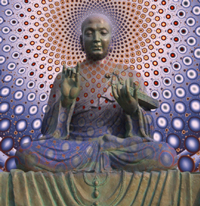
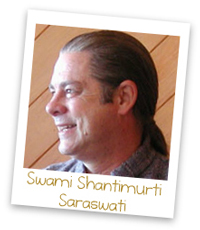
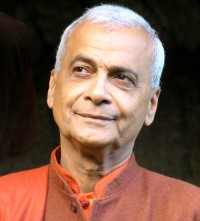
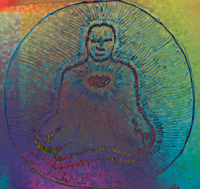
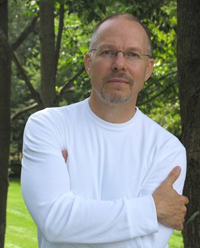
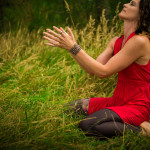
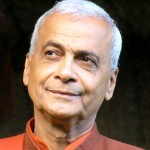
I follow your blog regularly,
and allWays appreciate and enjoy your perspective,
but this is surely the most impressive article I have yet read …
thank you … :~) …
may the force be allWays with you ………
Hey Sally,
Thank you – good to hear you enjoyed the article.
KL